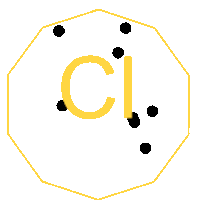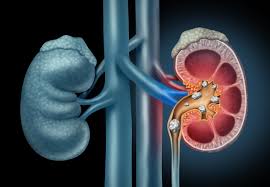Chlorine
Atomic mass:35.453 u

Chlorine: Element Overview
Basic Information
- Symbol: Cl
- Atomic Number: 17
- Atomic Weight: 35.45 u
- Element Category: Halogen
- Group: 17
- Period: 3
Physical Properties
- Phase at Room Temperature: Gas
- Melting Point: -101.5 °C (-150.7 °F)
- Boiling Point: -34.04 °C (-29.27 °F)
- Density: 3.2 g/L at 0 °C and 1 atm (as a gas)
- Color: Yellow-green
- Odor: Pungent, irritating
Chemical Properties
- Electronegativity: 3.16 (Pauling scale)
- Ionization Energies:
- First: 1251.2 kJ/mol
- Second: 2298 kJ/mol
- Third: 3822 kJ/mol
Isotopes
- Stable Isotopes: Chlorine has two stable isotopes: Cl-35 and Cl-37.
- Cl-35: 75.78%
- Cl-37: 24.22%
Occurrence and Production
- Natural Abundance: Chlorine is the 21st most abundant element in Earth’s crust.
- Sources: Found primarily in the form of chloride ions in salts such as sodium chloride (table salt) and in seawater.
- Production: Produced industrially by the electrolysis of brine (sodium chloride solution).
Uses and Applications
- Disinfection: Widely used to disinfect drinking water and swimming pools.
- Bleaching: Used in the production of bleach and other cleaning products.
- PVC Production: Used in the production of polyvinyl chloride (PVC) plastics.
- Chemical Industry: Used to produce a wide range of chemicals, including solvents, pesticides, and pharmaceuticals.
- Paper Industry: Used in the bleaching process of wood pulp.
- Metallurgy: Used in the extraction of certain metals from ores.
Safety and Precautions
- Reactivity: Chlorine is highly reactive and forms compounds with almost all elements.
- Handling: Chlorine gas is toxic and corrosive, requiring careful handling and storage.
- Toxicity: Chlorine gas can cause severe respiratory irritation and damage. Liquid chlorine can cause skin and eye burns.
Biological Role
- Essential Element: Chlorine is essential for life in the form of chloride ions.
- Electrolyte Balance: Plays a critical role in maintaining fluid balance and pH in the body.
- Digestive System: Component of hydrochloric acid in the stomach, aiding in digestion.
Historical Background
- Discovery: Discovered by Carl Wilhelm Scheele in 1774.
- Naming: The name “chlorine” comes from the Greek word “chloros,” meaning greenish-yellow, referring to the color of the gas.
Interesting Facts
- Chlorofluorocarbons (CFCs): Chlorine-containing compounds that have been used in refrigerants and aerosol propellants but are now regulated due to their role in ozone depletion.
- Bleach: Sodium hypochlorite (NaOCl) is a common household bleach containing chlorine.
- Pool Chlorination: Chlorine is used in pools to kill bacteria and other pathogens.
Summary
Chlorine is a halogen known for its high reactivity and wide range of applications, from water disinfection to the production of plastics and chemicals. Discovered in the 18th century, chlorine is essential for life in the form of chloride ions and plays a significant role in industrial and household applications. It is a toxic and corrosive gas, requiring careful handling.
Questions and Answers about Chlorine:
Q: What is the chemical symbol for Chlorine?
- A: Cl
Q: What is the atomic number of Chlorine?
- A: 17
Q: What type of element is Chlorine?
- A: Halogen
Q: What is the atomic weight of Chlorine?
- A: 35.45 u
Q: What group is Chlorine in?
- A: Group 17
Q: What period is Chlorine in?
- A: Period 3
Q: What is the phase of Chlorine at room temperature?
- A: Gas
Q: What is the melting point of Chlorine?
- A: -101.5 °C (-150.7 °F)
Q: What is the boiling point of Chlorine?
- A: -34.04 °C (-29.27 °F)
Q: What is the density of Chlorine gas at 0 °C and 1 atm?
- A: 3.2 g/L
Q: What is the color of Chlorine gas?
- A: Yellow-green
Q: What is the odor of Chlorine gas?
- A: Pungent, irritating
Q: What is the electronegativity of Chlorine?
- A: 3.16 (Pauling scale)
Q: What is the first ionization energy of Chlorine?
- A: 1251.2 kJ/mol
Q: How many stable isotopes does Chlorine have?
- A: Two (Cl-35 and Cl-37)
Q: What is the most abundant isotope of Chlorine?
- A: Cl-35
Q: How is Chlorine commercially produced?
- A: By the electrolysis of brine (sodium chloride solution)
Q: What is the natural abundance of Chlorine in Earth’s crust?
- A: 21st most abundant element
Q: What common compound contains Chlorine?
- A: Sodium chloride (table salt)
Q: What industry uses Chlorine extensively for disinfection?
- A: Water treatment
Q: What is one use of Chlorine in the chemical industry?
- A: Production of solvents and pesticides
Q: What role does Chlorine play in the paper industry?
- A: Bleaching wood pulp
Q: Why is Chlorine used in pools?
- A: To kill bacteria and pathogens
Q: What is the biological role of Chlorine in the body?
- A: Maintaining fluid balance and pH
Q: What is the significance of Chlorine in digestion?
- A: Component of hydrochloric acid in the stomach
Q: Who discovered Chlorine?
- A: Carl Wilhelm Scheele
Q: In what year was Chlorine discovered?
- A: 1774
Q: What is the origin of the name “Chlorine”?
- A: From the Greek word “chloros,” meaning greenish-yellow
Q: What property makes Chlorine reactive?
- A: High electronegativity
Q: What health hazard is associated with Chlorine gas?
- A: Respiratory irritation and damage
Q: What is the second ionization energy of Chlorine?
- A: 2298 kJ/mol
Q: What is the third ionization energy of Chlorine?
- A: 3822 kJ/mol
Q: Is Chlorine essential for life?
- A: Yes, in the form of chloride ions
Q: How should Chlorine gas be handled to avoid harm?
- A: With careful handling and storage to avoid exposure
Q: What is the environmental impact of Chlorine-containing compounds?
- A: Some, like CFCs, contribute to ozone depletion
Q: What is a common household product that contains Chlorine?
- A: Bleach (sodium hypochlorite)
Q: How does Chlorine contribute to public health?
- A: Disinfection of drinking water
Q: What is the role of Chlorine in metallurgy?
- A: Extraction of certain metals from ores
Q: What is the environmental impact of Chlorine use in industry?
- A: Potential release of toxic compounds
Q: What is Chlorine’s role in the production of PVC?
- A: Essential component in manufacturing polyvinyl chloride (PVC)






